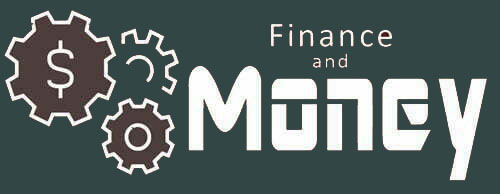A Rising Problem for Young Workers
The United States has seen low overall unemployment in the past year, but the story looks very different for young people. According to Labor Department data, unemployment among teens aged 16 to 19 jumped from 11.8 percent in January to 15.2 percent in July. This is the highest rate since August 2020, when many states were still locked down during the pandemic. Even more concerning, the share of teenagers who are working has fallen to one of the lowest levels in recent memory.
The editorial board of the Wall Street Journal warned, “Artificial intelligence is reducing jobs for young people, or so we keep hearing. But what about the increasing number of teenagers who are priced out of jobs by government?” This problem is often overlooked in national discussions about the economy, but the evidence is becoming harder to ignore.
Minimum Wage Increases and Teen Joblessness
Many economists argue that one of the main drivers of this youth unemployment crisis is the sharp increase in minimum wages across many states. The logic is simple: if the government raises the price of labor, employers use less of it. “What do you know? When government increases the price of labor, employers use less of it,” the Wall Street Journal editorial board wrote.
California is a striking example. The state raised its minimum wage to $16.50 per hour and created a special $20 minimum wage for fast-food restaurants in 2023. These policies were celebrated by politicians, but the impact on young workers has been severe. Teen unemployment in California averaged 21.2 percent last year, nearly double the national rate. Census Bureau data showed an even more alarming picture: in July, California’s teen unemployment rate hit 31 percent, double what it was two years earlier, before the fast-food minimum took effect.
Evidence From Other States
The pattern is not limited to California. States with some of the highest minimum wages also report higher rates of teen joblessness. In Washington, with a $16.66 minimum wage, the teen unemployment rate was 14.8 percent. Illinois, at $15, recorded 14.2 percent. Colorado, with a $14.81 wage floor, had 16.4 percent.
By comparison, states sticking with the federal minimum wage of $7.25 saw lower teen unemployment. Tennessee had a rate of 10.9 percent, and Kansas just 7.6 percent. Florida, which gradually raised its minimum wage to $13 this year, had a youth unemployment rate of 12.1 percent, roughly the national average. These numbers show a consistent trend: higher mandated wages tend to coincide with higher youth unemployment.
Exceptions That Prove the Rule
There are some exceptions, but these often have special circumstances. Kentucky, for example, had the nation’s second highest teen unemployment rate at 17.4 percent despite following the federal minimum wage. However, Kentucky also had one of the highest rates of teen labor force participation, with 38 percent of its teens seeking work. This meant more teens were counted as unemployed, even if they were actively trying to find jobs.
New York showed the opposite pattern. Its teen unemployment rate was relatively low at 10.9 percent, but that is largely because fewer teens were looking for work in the first place. These special cases highlight that while other factors play a role, high minimum wages consistently make it more difficult for teens to get hired.
Automation and the Disappearance of Entry-Level Jobs
Rising labor costs do not just limit hiring, they also push employers toward automation. A study by Grace Lordan of the London School of Economics and David Neumark of UC Irvine analyzed 35 years of data and found that raising the minimum wage “decreases significantly the share of automatable employment held by low-skilled workers.” Jobs such as supermarket cashiers and assembly line positions have been replaced by machines, leaving fewer opportunities for teens.
Elon Musk has warned that the trend is accelerating. “There is a pretty good chance we end up with a universal basic income, or something like that, due to automation,” Musk told CNBC. Richard Branson added that “the world is changing fast” and that while new technologies will create wealth, they could also “reduce the amount of jobs.”
Employers Shift Toward Older Workers
In addition to replacing jobs with machines, employers are also becoming more selective with the workers they hire. Economists Christopher Thornberg and Niree Kodaverdian noted that when wages rise, “employers who might have used lower-skilled, entry level labor (such as teenagers) will move toward using older, longer-term workers.” If businesses must pay more by law, they want employees with more experience and productivity to justify the cost.
This has hit teenagers particularly hard in California, where the fast-food industry has long been a starting point for young workers. “One-fifth of California workers under age 25 were employed in this industry,” the researchers wrote, adding that the $20 minimum wage has sharply cut into these opportunities.
Critics of the Minimum Wage
Some economists argue that the minimum wage is not just harmful in its current form but fundamentally flawed. Walter Block, a long-time critic, calls it an “unemployment law, not an employment law.” He explains, “If the law requires a wage of $10 per hour, and your productivity is only $7 hourly, then any firm foolish enough to hire you will effectively lose $3 every 60 minutes.” The result, Block says, is that “anyone with a productivity level below that stipulated by law will be unemployable.”
Block even questioned why politicians do not raise the minimum wage to extremes if they truly believe it guarantees prosperity. “If it really were a floor, undergirding wages, why not boost it to $100 per hour, or better yet $1000? Then we’d all be rich,” he wrote. His point is that the law functions more like a barrier to entry than a safety net, keeping the least skilled and youngest workers out of the job market.
The Long-Term Consequences for Teens
The immediate impact of youth unemployment is lost income, but the long-term damage is even greater. Work experience in the teenage years teaches critical skills such as punctuality, responsibility, teamwork, and the ability to follow directions. A U.S. Senate report from 2023 stressed that early job experience strongly influences future earnings and career success.
By shutting teens out of the workforce, wage mandates risk creating a generation less prepared for adulthood. As the Wall Street Journal editorial concluded, “Politicians love to claim credit for raising the minimum wage, but they never consider the unintended casualties — idle young people who will be less equipped for future careers and life.”
The current trends suggest that youth unemployment will remain high in states with aggressive wage laws, especially as automation continues to spread. In California alone, 90 percent of the rise in unemployment since 2023 has come from people under 25. Unless policymakers reconsider the unintended consequences of minimum wage increases, many teenagers will continue to face a harsh reality: fewer opportunities, less experience, and a harder path to long-term success.





